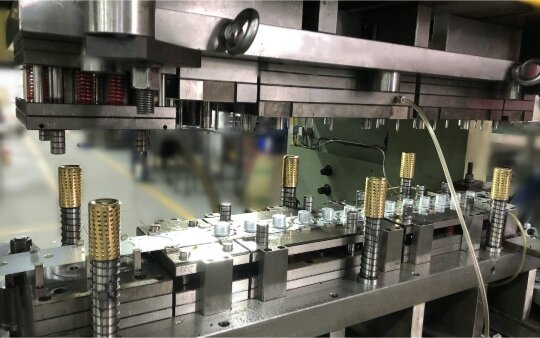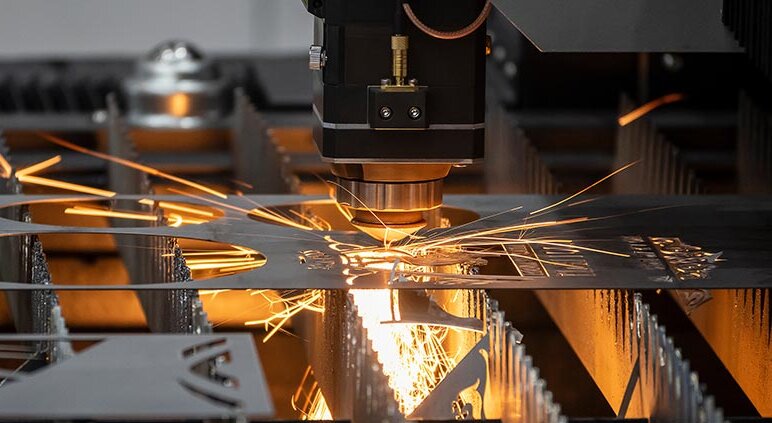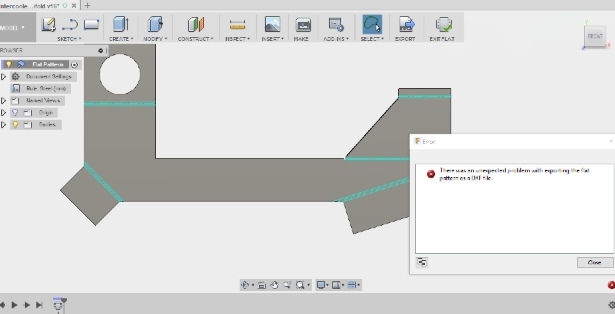When engineers design stamped parts, they often focus on shape and tolerance. But what happens after stamping is just as important. Sharp edges, rough surfaces, or unfinished finishes can cause assembly problems, accelerated wear, and increased costs.
Secondary operations fix these issues. They improve accuracy, appearance, and strength. These extra steps turn simple stamped parts into finished products that look good, work well, and last longer.
For designers and engineers, planning these operations early helps avoid problems later. It ensures better fit, faster assembly, and steady performance in production.
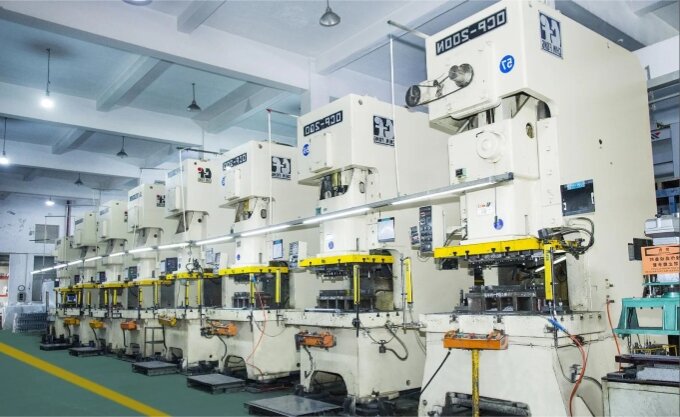
The Role of Secondary Operations in Modern Metal Stamping
Secondary processes fill the gap between raw stamped metal and the finished product. They enhance the appearance, texture, and performance of the part.
Why Secondary Operations Matter?
Stamping alone cannot make a part ready for use. Post-stamping work makes each piece safer to handle and easier to assemble. Deburring, threading, and coating improve smoothness, accuracy, and corrosion resistance.
These operations are commonplace in industries such as electronics, automotive, and medical equipment. In these fields, minor surface flaws or misalignments can lead to big problems. Extra finishing steps ensure each part meets both quality and visual standards.
The Link Between Functionality and Aesthetics
Good performance often comes with a good finish. Smooth, coated surfaces resist wear, cracking, and corrosion.
A clean surface also shows care in production. It makes a strong impression on customers and builds trust. A well-finished part doesn’t just look good — it proves that every detail was handled with precision and care.
What Is the Scope of Metal Stamping Services?
Estampagem de metais covers more than shaping metal sheets. It includes cutting, bending, forming, joining, and finishing.
Modern stamping services often combine different processes under one roof. Welding, tapping, hardware insertion, and coating can all be done in the same workflow. This saves time, lowers costs, and maintains consistent quality.
Stamping is used for both prototypes and large-scale production. Prototyping helps test design and function. High-volume runs ensure steady output once the design is ready. Today, stamping is a comprehensive production solution that builds, joins, and finishes parts for various applications.
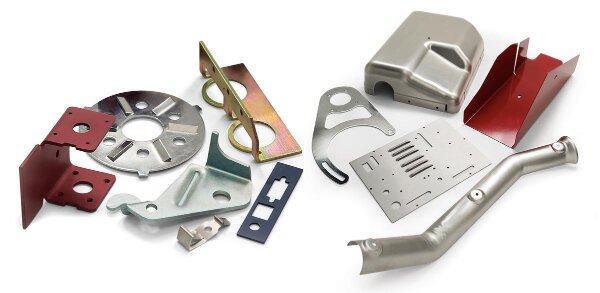
Common Types of Secondary Operations
Each secondary operation adds value in its own way. These steps improve part quality, safety, and appearance.
Deburring and Edge Finishing
After stamping, sharp edges or burrs often remain. They can cause injury or poor assembly. Rebarbagem removes these rough edges through processes such as tumbling, grinding, or brushing.
This makes the part smoother and safer. It also enhances coating adhesion and produces a cleaner appearance that reflects meticulous artistry.
Tapping and Thread Forming
Threads are needed for screws, bolts, or fasteners. Tapping cuts threads. Thread forming pushes the metal to create them.
Thread forming is stronger because it doesn’t remove material. It also prevents chips from clogging holes. Both methods ensure tight fits, making assembly faster and easier.
Riveting and Spot Welding
When parts need to stay connected, riveting and spot welding are reliable choices. Riveting joins different materials or thin sheets without the use of heat. Spot welding utilizes an electric current and pressure to join metal surfaces.
Both methods improve strength and speed. They help keep assemblies stable while reducing the need for extra fasteners or adhesives.
Surface Finishing and Coating
Acabamento da superfície protects the part and improves its appearance. Revestimento em pó adds a hard, colorful layer. Anodização strengthens aluminum and prevents oxidation. Electroplating adds shine, hardness, or conductivity to a surface.
These treatments protect parts from rust and wear. They also give products a professional, consistent look that customers can’t help but notice.
Inserção de Hardware
Hardware insertion adds PEM nuts, studs, or standoffs to metal sheets. This creates strong, reusable threads without the need for welding.
Automated presses enable fast and accurate installation. It’s a common step for control boxes, brackets, and enclosures where secure and removable attachments are needed.
Design Considerations for Integrating Secondary Operations
Design and fabrication should work together early in the process. Planning makes production smoother and saves costs in the long run.
Early Collaboration Between Design and Fabrication
When designers and fabricators collaborate, they can minimize the need for rework. They can design holes, bends, and clearances that accommodate later operations, such as coating or tapping, ensuring seamless integration.
For example, keeping enough distance between holes and edges prevents deformation or coating buildup. Early cooperation helps reduce waste and shortens lead times.
Material and Tolerance Impacts
Different materials react differently during finishing. Aluminum needs gentle handling to avoid scratches. Stainless steel can withstand higher temperatures, but must be polished carefully to remain flat.
Parts with tight tolerances require finishing that won’t alter their size, such as fine grinding or controlled plating, to ensure precise dimensions. Choosing the right material and process ensures that strength, accuracy, and appearance stay balanced.
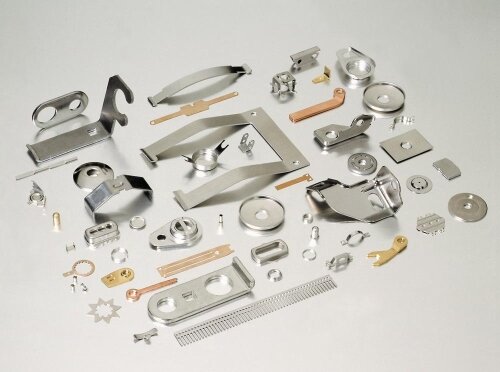
Benefits of Integrating Secondary Operations
Combining stamping with finishing saves time and improves quality. It also lowers cost and keeps results consistent.
Melhor desempenho do produto
Secondary operations help parts last longer. Smooth edges prevent cracks. Coatings reduce wear and corrosion. Strong threads hold better during repeated use.
Together, these features improve reliability. Products work better and need fewer repairs, which keeps customers satisfied.
Enhanced Aesthetics and Brand Perception
A polished surface makes a strong impression. It shows that the manufacturer values detail and quality.
In business-to-business markets, a clean finish signals reasonable process control. In consumer products, it adds value and strengthens brand image. A well-made product often represents a good-looking part.
Reduced Assembly Time and Cost
When all operations occur in one place, production moves more efficiently. Combining stamping, tapping, and coating eliminates delays and reduces transportation costs.
One equipment maker saved about 35% in production time after integrating these steps. They also reduced rework and improved consistency. The result was faster delivery and lower cost per part.
How to Choose the Right Secondary Operations?
The proper finishing method depends on shape, material, and working conditions. Complex parts may need light deburring. Outdoor parts need corrosion protection.
Designers should consider the placement of fasteners, coatings, or welds. Leaving enough space prevents later problems. Working with a skilled fabrication partner helps match process choices to design goals.
Please send us your CAD drawing or a sample of the part. Our engineers can recommend the optimal combination of stamping and finishing processes to enhance quality and minimize costs.
FAQs
How is durability ensured in stamped metal parts?
Durability stems from both the material and the finishing. Strong metals, such as stainless steel, form the base, while coatings and edge finishing protect against damage. Together, they keep the part working for years.
Can secondary operations affect tolerances?
Yes. Processes such as tapping or welding can slightly alter the dimensions of a part. Designers should define tolerance zones early and confirm them during production reviews to ensure consistency throughout the process.
How do integrated secondary operations reduce cost?
Doing all steps in-house removes the need for outside vendors. This saves time, lowers shipping costs, and keeps quality steady throughout production.
What materials benefit most from secondary operations?
Aluminum, stainless steel, and cold-rolled steel benefit the most. Finishing adds corrosion resistance, strength, and a clean surface for each type.
How do I know which secondary operations my part needs?
It depends on use and environment. Outdoor parts may need powder coating. Precision parts may need tapping and smooth edges. Talking with an experienced fabrication team helps find the right solution.
Olá, chamo-me Kevin Lee

Nos últimos 10 anos, tenho estado imerso em várias formas de fabrico de chapas metálicas, partilhando aqui ideias interessantes a partir das minhas experiências em diversas oficinas.
Entrar em contacto

Kevin Lee
Tenho mais de dez anos de experiência profissional no fabrico de chapas metálicas, especializando-me em corte a laser, dobragem, soldadura e técnicas de tratamento de superfícies. Como Diretor Técnico da Shengen, estou empenhado em resolver desafios complexos de fabrico e em promover a inovação e a qualidade em cada projeto.

